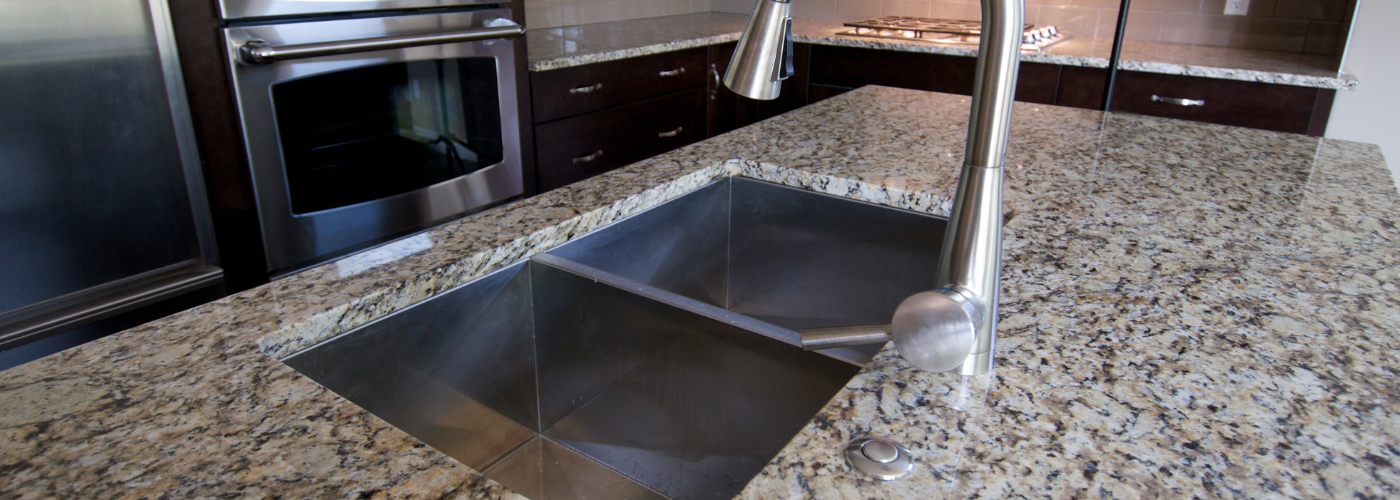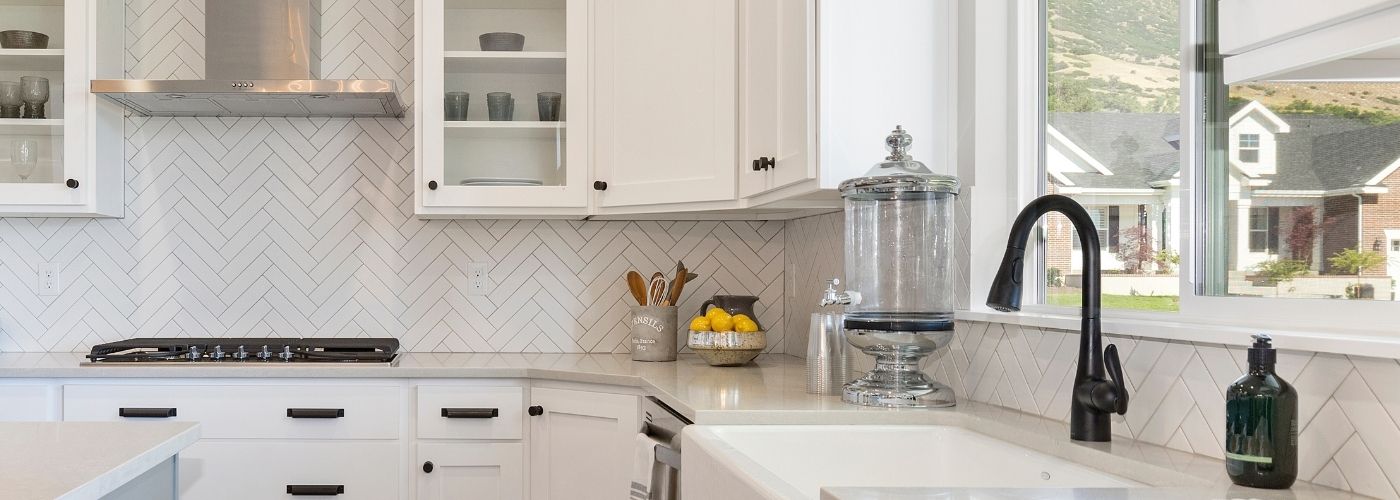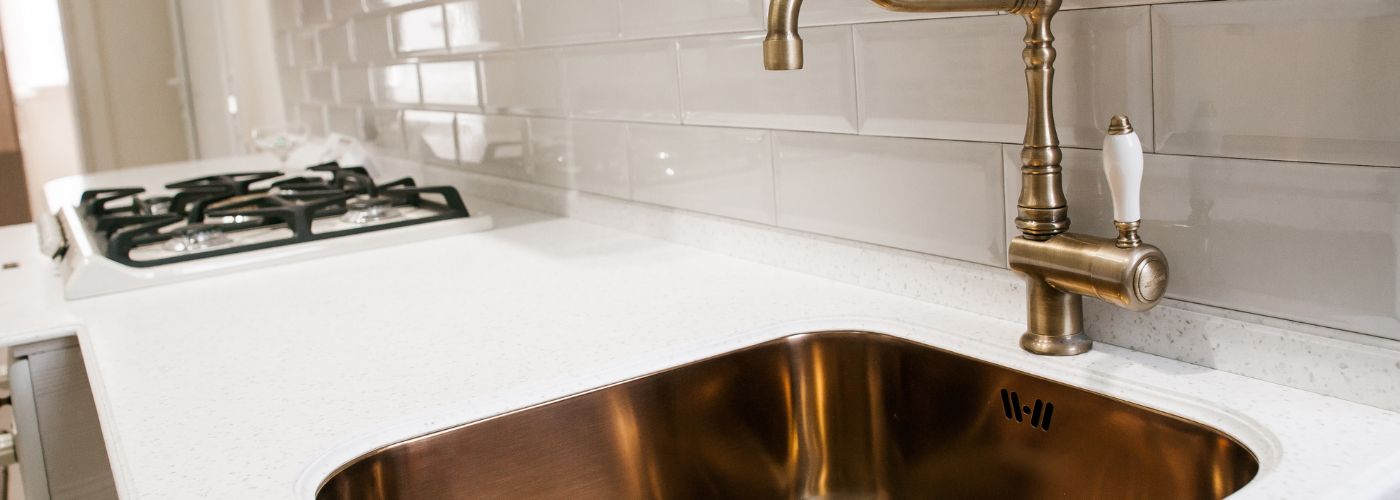When it comes to choosing the perfect kitchen sink, one of the most critical decisions you’ll face is selecting the right material. The material of your sink not only affects its appearance but also its durability and functionality.
With so many options available, it can be overwhelming to decide which kitchen sink material is best for your home. In this blog, we’ll explore some top kitchen sink materials, helping you make the choice that’s right for you!
What Is The Best Material For A Kitchen Sink?

Kitchen sinks come in a wide range of materials, but when it comes to a kitchen remodel or upgrade, here are some top types to consider:
Stainless Steel
Stainless steel sinks are a popular choice for many homeowners, and for good reason. They are incredibly durable, resistant to stains and corrosion, and easy to clean. Stainless steel sinks come in various gauges, with lower gauge numbers indicating thicker and more robust materials. While 18-gauge stainless steel sinks are common and cost-effective, a 16-gauge sink offers superior durability and less susceptibility to dents.
Cast Iron
Cast iron sinks are known for their timeless appeal and durability. These sinks are coated with enamel, which gives them a glossy finish and makes them resistant to stains and scratches. However, cast iron sinks can be quite heavy, so proper support is essential during installation. They also require periodic re-glazing to maintain their appearance and prevent chipping.
Granite Composite
Granite composite sinks are a blend of natural stone and acrylic resins. These sinks are incredibly sturdy, heat-resistant, and scratch-resistant. They also come in a variety of colors, making it easier to find one that complements your kitchen decor. While they are durable, granite composite sinks can be more expensive than some other options.
Fireclay
Fireclay sinks have a charming, farmhouse-style appearance and are made by molding clay into the desired shape and firing it at high temperatures. They are durable, resistant to chips and scratches, and easy to clean. Fireclay sinks are known for their classic white finish, but they can be pricier than other materials. Make sure the complement your kitchen backsplash before making the investment!
Copper
Copper sinks are a unique and luxurious choice for the kitchen. They develop a beautiful patina over time, giving your kitchen a rustic and charming look. Copper is naturally antimicrobial, which means it inhibits the growth of bacteria. However, it does require regular maintenance to keep its shine and prevent patina buildup.
What Are The Different Types Of Kitchen Sinks

Now that we’ve explored some of the top kitchen sink materials let’s take a look at the different types of kitchen sinks available:
Single-Bowl Sink
A single-bowl sink has only one large basin, which is perfect for those who want simplicity and ample space for larger pots and pans. It’s a classic choice that works well in smaller kitchens.
Double-Bowl Sink
Double-bowl sinks have two separate basins, allowing you to multitask by using one side for washing and the other for rinsing or drying. They are versatile and suitable for various kitchen setups.
Farmhouse Sink
Farmhouse sinks, also known as apron-front sinks, have a distinctive exposed front panel. They add a touch of rustic charm to any kitchen and are often deeper than standard sinks, making them ideal for large pots and pans.
Undermount Sink
Undermount sinks are installed beneath the countertop, creating a seamless and sleek appearance. They are easy to clean and provide a modern look to your kitchen.
Drop-In Sink
Drop-in sinks, also known as top-mount sinks, are placed over the countertop. They are easy to install and come in various materials and styles that can easily complement any backsplash or countertop material.
Are Touchless Kitchen Faucets Worth It?
In the era of smart homes, touchless kitchen faucets have gained popularity. These faucets use motion sensors to turn the water on and off, allowing you to wash your hands or fill a pot without touching the faucet handles.
While they can be a bit more expensive than traditional faucets, touchless faucets offer several advantages. They are more hygienic, conserve water by reducing accidental drips, and are convenient when your hands are messy or full. Ultimately, whether they are worth it depends on your budget and how much you value these features!
Who Can Install A Kitchen Sink
When it comes to installing a kitchen sink, you have a few options:
Professional Installer: Hiring a licensed plumber or kitchen installer is the safest and most reliable option. They have the expertise to ensure that your sink is correctly installed, your plumbing is up to code, and there are no leaks.
DIY: If you’re handy with tools and have some plumbing experience, you may choose to install the sink yourself. However, be prepared to spend time on research and have the necessary tools and materials on hand.
Kitchen Installer: If you’re doing a complete kitchen renovation, you may hire a kitchen installer who can handle the sink installation as part of the larger project.
Make no mistake: choosing the right kitchen sink material and type is a crucial decision for your home upgrade! Consider your budget, needs, and personal style when making your choice. Happy kitchen remodeling!
